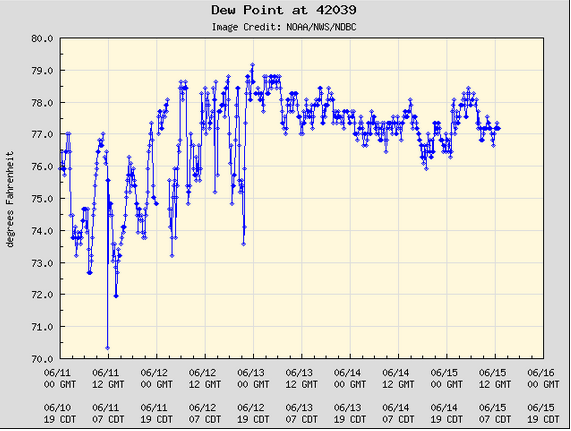Tropical Depression Three-E formed over the Eastern North Pacific Ocean south of El Salvador on Thursday afternoon. At 5:00 p.m. EDT on Thursday the center of Tropical Depression Three-E was located at latitude 10.8°N and longitude 89.9°W which put it about 205 miles (330 km) south-southwest of San Salvador, El Salvador. The tropical depression was moving toward the north at 2 m.p.h. (3 km/h). The maximum sustained wind speed was 35 m.p.h. (55 km/h) and and there were wind gusts to 45 m.p.h. (75 km/h). The minimum surface pressure was 1006 mb.
A low pressure system over the Eastern North Pacific Ocean south of El Salvador strengthened on Thursday afternoon and the National Hurricane Center designated the system as Tropical Depression Three-E. The inner end of a rainband wrapped around the western and southern sides of the center of Tropical Depression Three-E. Other bands of showers and thunderstorms were revolving around the center of the depression. Storms near the center of circulation generated upper level divergence that pumped mass away from the tropical depression.
Tropical Depression Three-E will move through an environment favorable for intensification during the next 24 hours. The tropical depression will move over water where the Sea Surface Temperatures are near 28˚C. It will be in an area where the upper level winds are weak and there will be little vertical wind shear. Tropical Depression Three-E is very likely to strengthen to a tropical storm during the next 24 hours.
Tropical Depression Three-E will be in an area where the steering winds are weak during the next 24 hours. A broad area of low pressure over Central America and the adjacent part of the Eastern North Pacific Ocean will steer the tropical depression slowly toward the north during the next 24 hours. On its anticipated track Tropical Depression Three-E will move slowly closer to El Salvador. Rainbands in the northern fringes of the tropical depression could drop heavy rain over parts of El Salvador and Guatemala. Heavy rain could cause flash floods in some locations.
Elsewhere over the Eastern North Pacific Ocean, Hurricane Blas churned southwest of Mexico. At 5:00 p.m. EDT on Thursday the center of Hurricane Blas was located at latitude 16.2°N and longitude 105.6°W which put it about 210 miles (340 km) south-southwest of Manzanillo, Mexico. Blas was moving toward the west-northwest at 8 m.p.h. (13 km/h). The maximum sustained wind speed was 85 m.p.h. (135 km/h) and and there were wind gusts to 100 m.p.h. (160 km/h). The minimum surface pressure was 980 mb.

 The record dew point temperature of 84 degrees was nearly five degrees higher than any dew point temperature measured by the buoy during the past five days.
The record dew point temperature of 84 degrees was nearly five degrees higher than any dew point temperature measured by the buoy during the past five days.